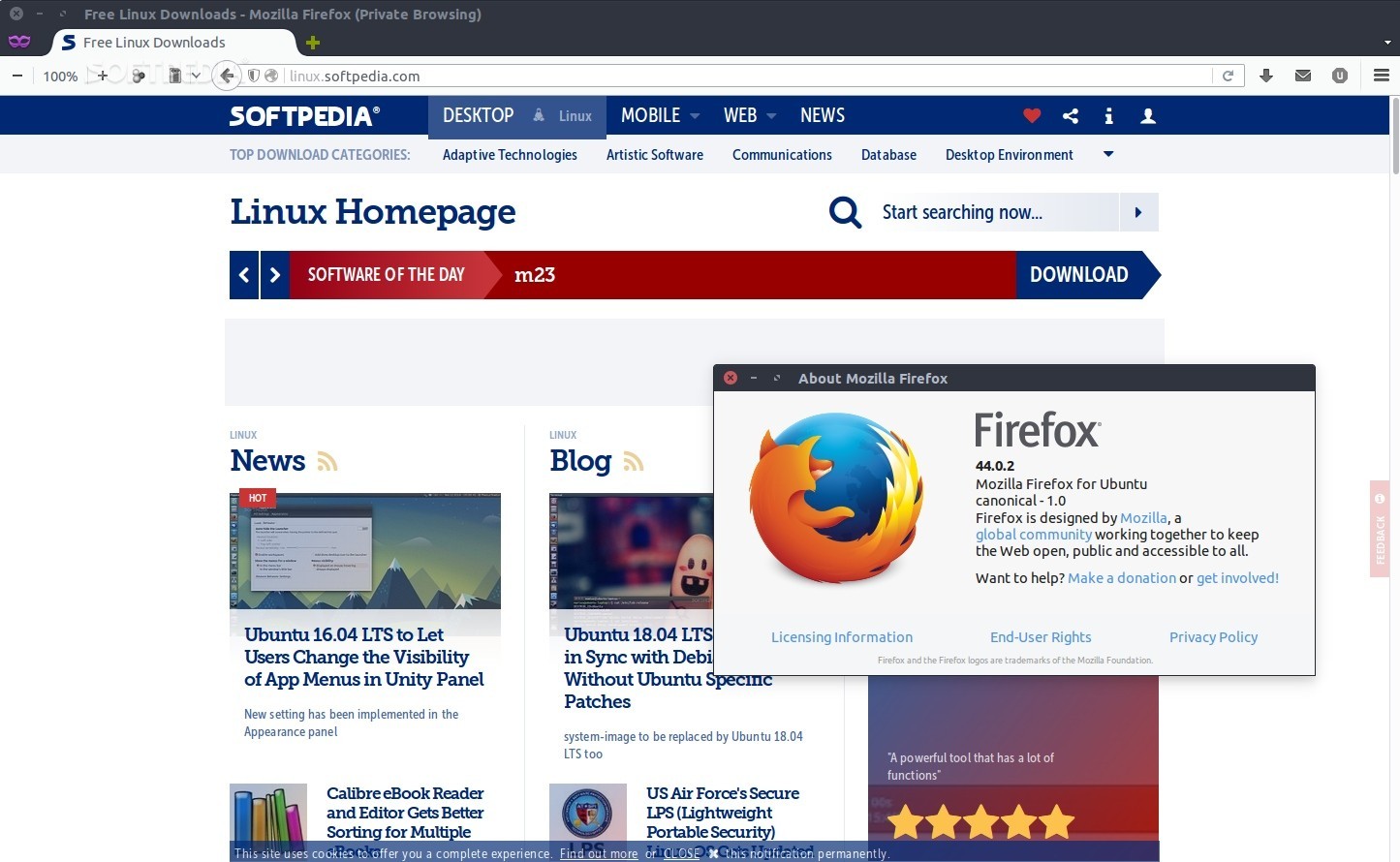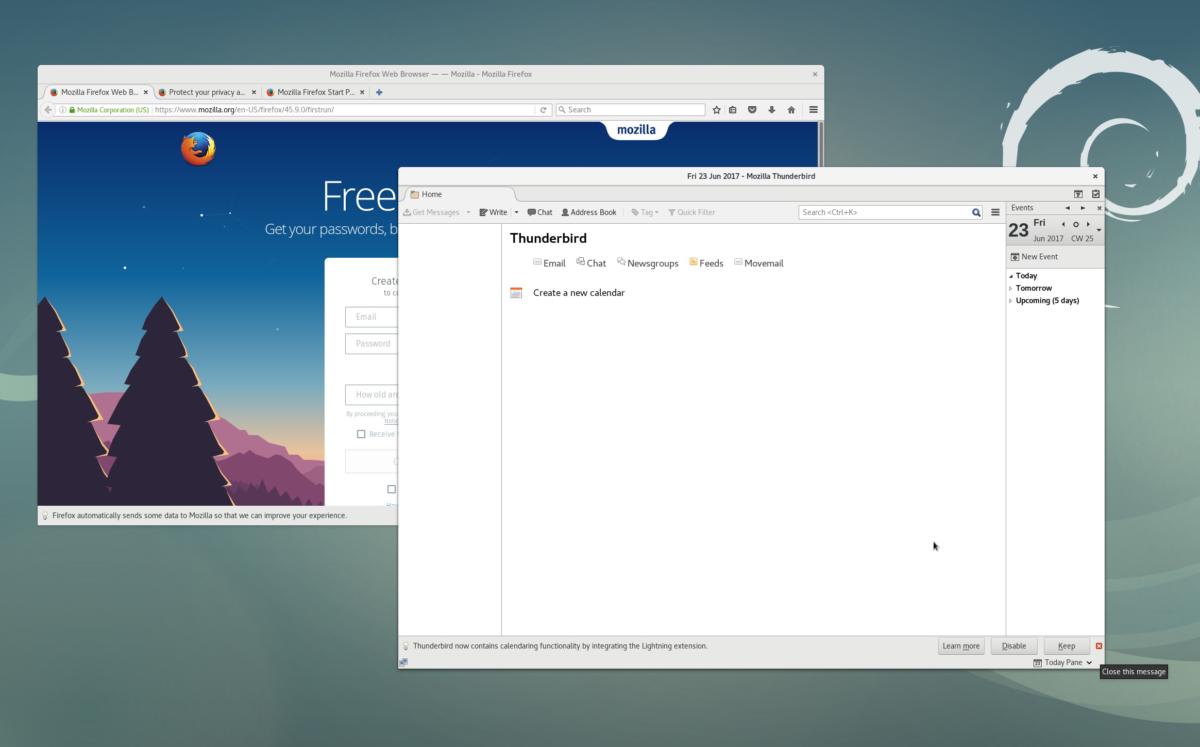From Debian Etch through Debian Jessie (9th June 2016), Mozilla Firefox was not available in Debian with the official name or branding. Instead, Debian shipped a free-software version rebranded by Debian, named Iceweasel. The 'Iceweasel' name was revived in the Debian community as a possible name to give the rebranded version of Firefox. The Iceweasel found in Debian is not GNU IceWeasel (now GNU IceCat) but a rebranded Firefox created by the Debian project. Dec 24, 2018 Explains how to run Mozilla firefox from the command prompt (bash shell) under Linux, macOS,.BSD, or UNIX like operating systems. Start iceweasel via a shell script: #!/bin/sh cd iceweasel./iceweasel Looks that iceweasel isn't installed in a path that can be found via the path environment variable. Try: locate iceweasel or check your software (package) installer to find the location of the program. Iceweasel A smarmy prostitute from New York. A whiny pathetic lizard on Little Green Footballs with the wit of a cadaver. A failed porn actress with HIV.
June 17th, 2017

Iceweasel Vs Firefox
After 26 months of development the Debian project is proud to presentits new stable version 9 (code name Stretch
), which willbe supported for the next 5 years thanks to the combined work of theDebian Security teamand of the Debian Long TermSupport team.
Debian 9 isdedicatedto the project's founder Ian Murdock, who passed away on 28 December 2015.
In Stretch
, the default MySQL variant is now MariaDB.The replacement of packages for MySQL 5.5 or 5.6 by the MariaDB 10.1variant will happen automatically upon upgrade.
Firefox and Thunderbird return to Debian with the release of Stretch
,and replace their debranded versions Iceweasel and Icedove, which werepresent in the archive for more than 10 years.
Thanks to the Reproducible Builds project, over 90% of the sourcepackages included in Debian 9 will build bit-for-bit identical binarypackages.This is an important verification feature which protects users frommalicious attempts to tamper with compilers and build networks. Future Debianreleases will include tools and metadata so that end-users can validatethe provenance of packages within the archive.
Administrators and those in security-sensitive environments can becomforted in the knowledge that the X display system no longer requiresroot
privileges to run.
The Stretch
release is the first version of Debian to feature themodern
branch of GnuPG in the gnupg
package.This brings with it elliptic curve cryptography, better defaults,a more modular architecture, and improved smartcard support.We will continue to supply the classic
branch of GnuPG as gnupg1for people who need it, but it is now deprecated.
Debug packages are easier to obtain and use in Debian 9 Stretch
.A new dbg-sym
repository can be added to the APT source list toprovide debug symbols automatically for many packages.
The UEFI (Unified Extensible Firmware Interface
) support firstintroduced in Wheezy
continues to be greatly improved in Stretch
,and also supports installing on 32-bit UEFI firmware with a 64-bit kernel.The Debian live images now include support for UEFI booting as a newfeature, too.
This release includes numerous updated software packages, such as:
- Apache 2.4.25
- Asterisk 13.14.1
- Chromium 59.0.3071.86
- Firefox 45.9 (in the firefox-esr package)
- GIMP 2.8.18
- an updated version of the GNOME desktop environment 3.22
- GNU Compiler Collection 6.3
- GnuPG 2.1
- Golang 1.7
- KDE Frameworks 5.28, KDE Plasma 5.8, and KDE Applications 16.08 and 16.04 for PIM components
- LibreOffice 5.2
- Linux 4.9
- MariaDB 10.1
- MATE 1.16
- OpenJDK 8
- Perl 5.24
- PHP 7.0
- PostgreSQL 9.6
- Python 2.7.13 and 3.5.3
- Ruby 2.3
- Samba 4.5
- systemd 232
- Thunderbird 45.8
- Tomcat 8.5
- Xen Hypervisor
- the Xfce 4.12 desktop environment
- more than 51,000 other ready-to-use software packages, built froma bit more of 25,000 source packages.
With this broad selection of packages and its traditional widearchitecture support, Debian once again stays true to its goal of beingthe universal operating system. It is suitable for many different usecases: from desktop systems to netbooks; from development servers tocluster systems; and for database, web, or storage servers. At the sametime, additional quality assurance efforts like automatic installationand upgrade tests for all packages in Debian's archive ensure thatStretch
fulfills the high expectations that users have of astable Debian release.
A total of ten architectures are supported:64-bit PC / Intel EM64T / x86-64 (amd64),32-bit PC / Intel IA-32 (i386),64-bit little-endian Motorola/IBM PowerPC (ppc64el),64-bit IBM S/390 (s390x),for ARM, armeland armhf for older and more recent 32-bit hardware,plus arm64 for the 64-bit AArch64
architecture,and for MIPS, in addition to the two 32-bit mips (big-endian)and mipsel (little-endian), there is a newmips64el architecture for 64-bit little-endian hardware.Support for 32-bit Motorola/IBM PowerPC (powerpc)has been removed in Stretch
.
Want to give it a try?
If you simply want to try Debian 9 Stretch
without installing it,you can use one of the available live images which loads and runs thecomplete operating system in a read-only state via your computer's memory.Should you enjoy the operating system you have the option of installingfrom the live image onto your computer's hard disk. The live image isavailable for CDs, USB sticks, and netboot setups. Initially, theseimages are provided for the amd64 and i386architectures only. More information is available in thelive install images section ofthe Debian website.
Should you choose to install Debian 9 Stretch
directly onto yourcomputer's hard disk you can choose from a variety of installation mediasuch as Blu-ray Disc, DVD, CD, USB stick, or via internal network.Several desktop environments — GNOME, KDE Plasma Desktop andApplications, LXDE, and Xfce — may be installed through thoseimages with your desired selection chosen from the boot menus ofthe install media.In addition, multi-architecture CDs and DVDs are available which supportinstallation of multiple architectures from a single disc. Or you canalways create bootable USB installation media(see the Installation Guidefor more details). For cloud users Debian also offerspre-builtOpenStack images for amd64 and arm64 architectures, ready to use.

Debian can now be installed in 75 languages, with most of them availablein both text-based and graphical user interfaces.
The installation images may be downloaded right now viabittorrent (the recommended method),jigdo, orHTTP; seeDebian on CDs for further information. Stretch
willsoon be available on physical DVD, CD-ROM, and Blu-ray Discs fromnumerous vendors too.

Upgrading Debian
Upgrades to Debian 9 from the previous release, Debian 8(codenamed Jessie
), are automatically handled by the apt-getpackage management tool for most configurations.As always, Debian systems may be upgraded painlessly, in place,without any forced downtime, but it is strongly recommended to readthe release notes aswell as the installationguide for possible issues, and for detailed instructions oninstalling and upgrading. The release notes will be further improved andtranslated to additional languages in the weeks after the release.
About Debian
Iceweasel Browser
Debian is a free operating system, developed bythousands of volunteers from all over the world who collaborate via theInternet. The Debian project's key strengths are its volunteer base, itsdedication to the Debian Social Contract and Free Software, and itscommitment to provide the best operating system possible. This newrelease is another important step in that direction.
Contact Information
Iceweasel Kali

Iceweasel Vs Firefox
For further information, please visit the Debian web pages athttps://www.debian.org/ or send mail to<press@debian.org>.
